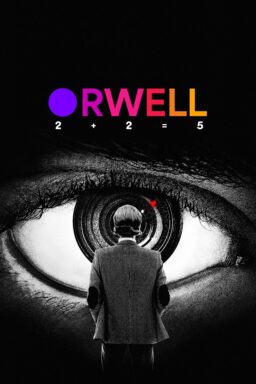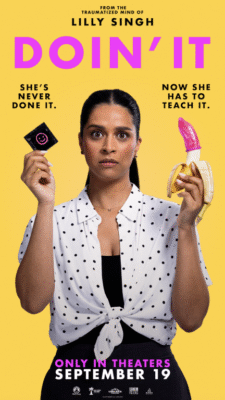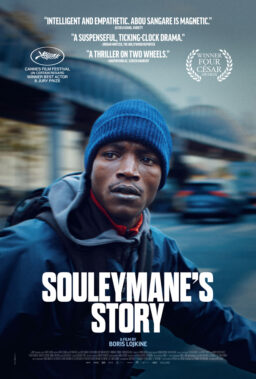Animated cartoons have traditionally been places of slapstick and wonderment and only the occasional wicked stepmother. But not in the world of Ralph Bakshi: His first feature, “Fritz The Cat”, was an X-rated excursion into the urban underworld, and in “Heavy Traffic”, “Coonskin” and “Hey, Good Lookin’”, he examined gamblers, pimps, street gangs, dope pushers and 1950s juvenile delinquents.
Maybe that’s why Bakshi’s latest film, “Wizards”, comes as a surprise and revelation. It’s pure fantasy, a tale of magicians and elves set millions of years after the street toughness of his earlier films, and although it’s intended for high school and older audiences, it’s perfectly entertaining for younger kids. In terms of Bakshi’s career, a more accessible film for wider audiences was overdue; he’d had two expensive failures in a row.
After black groups protested the ghetto stereotypes in “Coonskin”, it was dropped by Paramount and picked up by a small independent distributor which never found a market for it. And “Hey, Good Lookin’,” inspired by Bakshi’s memories of growing up in Brownsville, the Jewish-Italian-black ghetto in Brooklyn, is still on the shelf: “It’s my best film,” Bakshi says, “but they’re afraid of it.” Both films were well-received by the critics and preview audiences which saw them — his visions are realized in bizarre surrealistic details that really grab you — but distributors treated them as hot potatoes.
Animation is a difficult form to work with in the first place. In its cost per minute of finished film, it’s much more expensive than conventional features. And its market is limited for the most part to kiddie matinees and the biannual Disney. Exhibitors are wary of adult cartoons, no matter how inventive, and the successful exceptions like “Yellow Submarine” and “Fritz The Cat” only seem to prove the rule that without the Beatles or a controversial X rating (the first ever for animation), they’re hard sells.
That’s why the success of “Wizards” is intriguing. It was a do-or-die picture, if Bakshi wanted to remain free to choose his own projects, and it did it. If it had failed, Bakshi might have had to go back to hiring out his talents (he was an animator for all the Peter Max commercials, the Bert and Harry Peale campaign for Piel’s beer and the CBS Terrytoons). But it’s a considerable success, and Bakshi currently has financing for the most ambitious animated project in years: A three-film version of J. R. R. Tolkien’s “Lord of the Rings.”
The “Wizards” success story is confounding to distributors trying to predict box-office performance. The movie was released by a wary 20th Century-Fox, which was concerned by Bakshi’s recent track record and originally ordered only 50 prints. It opened slowly, often in college towns, and then Fox discovered it had a problem: So many engagements were being held over for weeks at a time that there was a print shortage. “Wizards” is only now being moved into major markets like Chicago, but it’s already a box-office hit. Variety says it’s grossed more than $1.5 million in its first 13 cities.
Was Bakshi consciously trying to make a mass-market film as a commercial comeback?
“Well, I didn’t know if this was a mass-market film or not,” he said a few weeks ago in an interview at the U.S.A. Film Festival in Dallas. “It’s strictly my fantasies, my story ideas… It appealed to me, and I wanted to make it. And you gotta face it: My career wasn’t exactly in great shape.”
He unmistakably sounded as if he was from Brooklyn, and he looked a little like an alumnus of one of the street gangs in “Hey, Good Lookin’”: Strongly built, compact, aggressive. He toyed with a coffee cup and let the bitterness over “Coonskin” and “Hey, Good Lookin’” suggest itself.
“The thing about ‘Coonskin’ was, I didn’t consider it as anti-black, but pro-black. I was trying to record some of the things I’d observed and experienced myself. About bow the ghetto works and what’s good and evil about it. If you go into the ghetto and you can only portray the positive characters, what kind of a picture is that? With ‘Hey, Good Lookin’, I guess they were also afraid of the characters. The punks and juvenile delinquents. It was easier to put it on the shelf than deal with it. But now, with “Wizards” looking like a success, I think it will be released after all.”
Bakshi said he’s three months into the preparation of “The Fellowship of the Ring,” the first film of the Tolkien trilogy, and has put together a team of about 100 people for the project. One of the questions he still hasn’t answered for himself, he said, is how to portray the Hobbits, the heroes of the epic classic. Tolkien himself drew maps and other illustrations for his books, but never drew a Hobbit, presumably because all the drawings were Hobbit-eye-views.
“One decision we have arrived at,” Bakshi said, “is about the look of the animation. The Rings books will not be done as cartoons, with sharp-edged characters and so forth. We’re going for a more realistic animated look. What we’d like to have it finally look like, if you can imagine this, is animated Rembrandt. Wouldn’t that be a new approach?”











